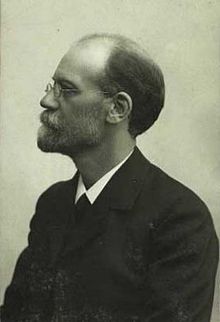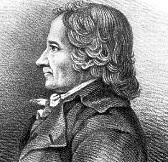
Johan Christian Fabricius was a Danish zoologist, specialising in "Insecta", which at that time included all arthropods: insects, arachnids, crustaceans and others. He was a student of Carl Linnaeus, and is considered one of the most important entomologists of the 18th century, having named nearly 10,000 species of animals, and established the basis for the modern insect classification.

Erik Acharius was a Swedish botanist who pioneered the taxonomy of lichens and is known as the "father of lichenology" and famously the last pupil of Carl Linnaeus.
The Modern Breakthrough is the common name of the strong movement of naturalism and debating literature of Scandinavia which replaced romanticism near the end of the 19th century.

The University of Copenhagen Botanical Garden, usually referred to simply as Copenhagen Botanical Garden, is a botanical garden located in the centre of Copenhagen, Denmark. It covers an area of 10 hectares and is particularly noted for its extensive complex of historical glasshouses dating from 1874.
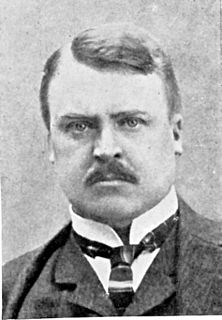
Johan Hjort was a Norwegian fisheries scientist, marine zoologist, and oceanographer. He was among the most prominent and influential marine zoologists of his time.
The Tjärnö Marine Biological Laboratory is a marine biology field station in Sweden. It is part of the University of Gothenburg and Stockholm University, located in Strömstad Municipality in the northern part of Bohuslän province.
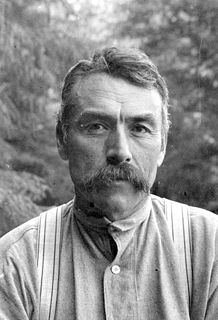
George Hunt (Tlingit) was a consultant to the American anthropologist Franz Boas; through his contributions he is considered a linguist and ethnologist in his own right. He was Tlingit-English by birth and learned both those languages. Growing up with his parents at Fort Rupert, British Columbia in Kwakwaka'wakw territory, he learned their language and culture as well. Through marriage and adoption he became an expert on the traditions of the Kwakwaka'wakw of coastal British Columbia.
Fredrik Christian Emil Børgesen was a Danish botanist and phycologist. He graduated in botany from the University of Copenhagen and was subsequently employed as an assistant at the Botanical Museum (1893–1900). His doctoral thesis dealt with the marine algae of the Faroe Islands (1904). Later, he became librarian at the Library of the Botanical Garden (1900–1935).

James Alexander Teit was an anthropologist, photographer and guide who worked with Franz Boas to study Interior Salish First Nations peoples in the late 19th and early 20th centuries. He led expeditions throughout BC and made many contributions towards native ethnology. He also worked with Edward Sapir of the Geological Survey of Canada in 1911.
Events from the year 1901 in Denmark.

Marienlyst Castle, Danish Marienlyst Slot, is a palacial residence located in Helsingør, Denmark. It was named after King Frederik V of Denmark's second wife, Juliana Maria the queen consort of Denmark and Norway. The building formerly served as a royal pavilion of Kronborg Castle and was mostly used as a venue for pleasure and hunting. It was also used by the director-general of the Øresund Custom House, Colonel Adam Gottlob von Krogh and his wife Magdalene, between 1796 and 1847.
Schizopoda is a former taxonomical classification of a division of the class Malacostraca. Although it was split in 1883 by Johan Erik Vesti Boas into the two distinct orders Mysidacea and Euphausiacea, the order Schizopoda continued to be in use until the 1930s.
Yu Yokoya (18??-1967) was a Japanese marine biologist. He worked at least after 1917 on Japanese decapod crustaceans for the Fisheries Institute, Faculty of Agriculture, Tokyo Imperial Univ.
Alfred G. Mayer was an American marine biologist and zoologist of German descent whose fascination with medusae (jellyfish) marked a turning point for biology. Despite Mayor's interest in the sea, his first voyage began during his twenty-fourth year of life. Because of his German 'heritage', "[...]he altered it to "Mayor" in order to dissociate himself from his Germanic roots". Mayor is also greatly known for his many publications and papers in which he wrote about topics ranging from physics to hunting and fishing.

Søkvæsthuset is a former Naval hospice located on Christianshavn Canal in the Christianshavn district of Copenhagen, Denmark. The listed building housed the Royal Danish Naval Museum indtil 2016. The collection has been moved to and is exhibited at the Arsenal Museum (Tøjhusmuseet) at Christiansborg.
Malcolm Roy Clarke FRS (1930–2013) was a British marine biologist. He is most well known for his extensive work on cephalopods and whales.
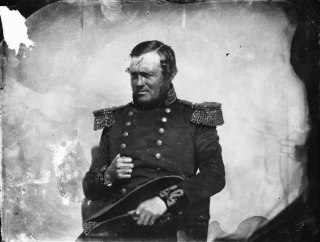
Christian Søren Marcus Olrik (1815-1870) was a Danish Greenlander professor, zoologist, botanist, and Royal Inspector of North Greenland.
Elisabeth Deichmann was a Danish-born American marine biologist.
